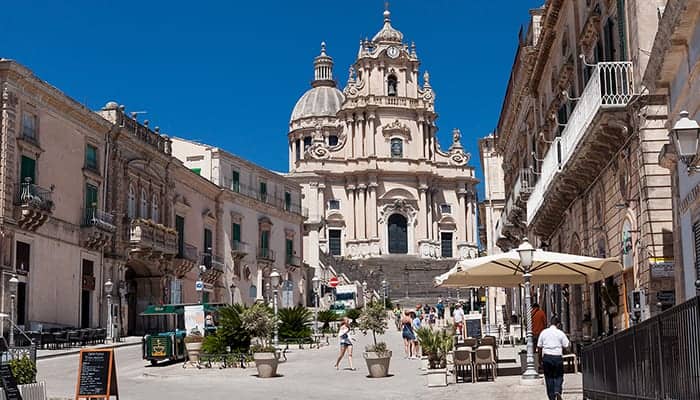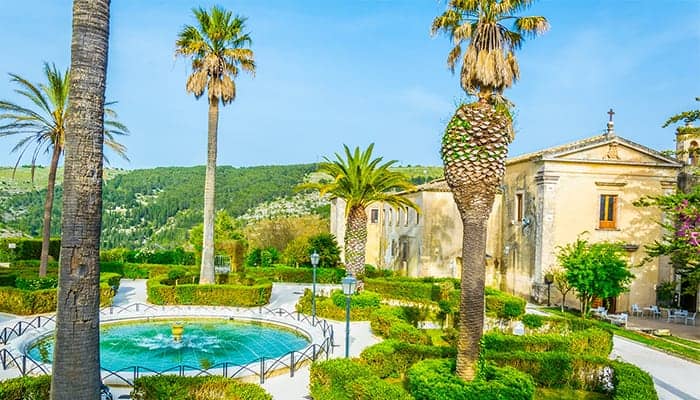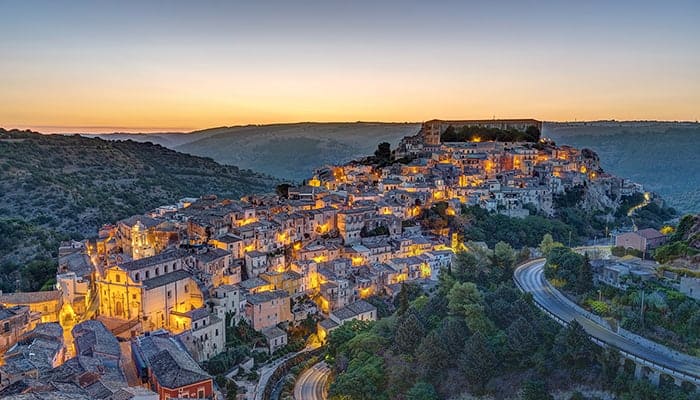
The Ragusa we see today is the Ragusa built after the 1693 earthquake. The old medieval town, Ragusa Ibla or just Ibla, was rebuilt on the original site just above the valley while a new town gradually emerged on the ridge above the valley. Ragusa is the capital of the Provincia di Ragusa, regional government offices as well as those of leading commercial entities are housed in the upper town. This part of the city is also the main residential and shopping area. From a visitor’s point of view there is little to be said of the upper town.
Ibla, on the other hand is a delightful, quiet town, devoid of commercial activity with no hustle and bustle. It’s the sort of place where you want to wonder about and pick one of the many quaint restaurants and take your time over lunch.
There are three ways of getting to Ibla, either by car down the valley, by public transport from the upper town or, for the brave hearted, to walk down – by far the most interesting and certainly worth doing at least once. The main street in the upper town, Corso Italia, leads onto a narrow road that gradually descends to the very heart of Ibla, the Piazza Duomo. At the top of the descent is the church of Santa Maria delle Scale, from which you get a panoramic view of Ibla, 340 steps down. On the way down a short visit to Santa Maria dell’ Itria brings you in touch with the Knights of Malta who built the church in 1600, not long before the earthquake.
Unlike most other buildings, this church more or less survived and is today of great interest as a living example of pre-earthquake architecture. Inside the church is a painting of the Madonna with a view of the Port of Valletta at the feet of the child Jesus. Another painting with a possible Maltese connection is that of St Julian's attributed to Mattia Preti who was in Malta when the church was being built.
Must see:
A Rosario Gagliardi masterpiece, very similar to that in Modica, but with more pleasing proportions, dominates the Piazza. You cannot help but think that it is a pity houses have been erected so close to it.
A very civilised way of admiring the façade and grand stairway of the Duomo is to enjoy a coffee or a Campari at the Cafe at the foot of the Duomo.

Take a walk down the slightly sloping Piazza and onto the baroque lined main winding street beyond. In a few pleasant minutes you are at the Giardino Ibleo. The Giardino Ibleo is a haven of peace and quiet with an exquisite view of the valley below and beyond. Protected in winter and shady in the summer, there is always time for a peaceful walk in the Giardino.
The flowers, trees, shrubs and centuries old chapels lend a pleasant, out-of-this-world atmosphere to the place. Just outside the entrance to the garden is the Portale San Giorgio, it is all that remains of the original church of San Giorgio which was lost in the 1693 earthquake.

On the way down to the Giardino, make a short stop to admire yet another of Gagliardi’s work, the small but elegant church of San Giuseppe with its interesting prominent balconies with elaborate railings.
The Commissario’s fans will want to know that on to the left on the way down to the Giardino is the Circolo di Conversazione (freely translated – Conversation Club). Look out for A Rusticana, that’s the Inspector’s Trattoria San Calogero.
Needless to say, Ibla is a UNESCO World Heritage Site.
